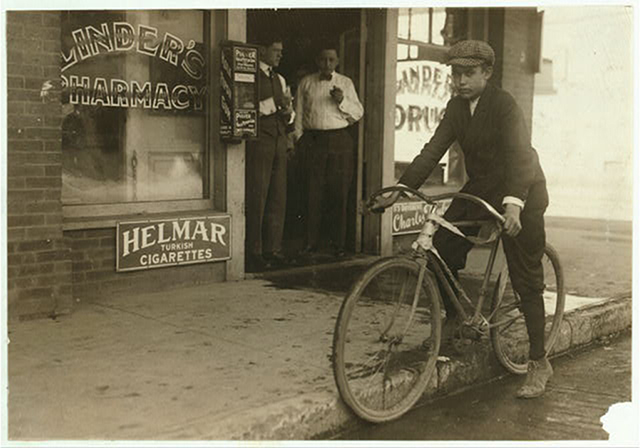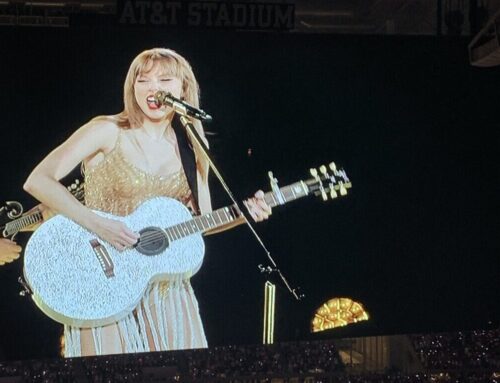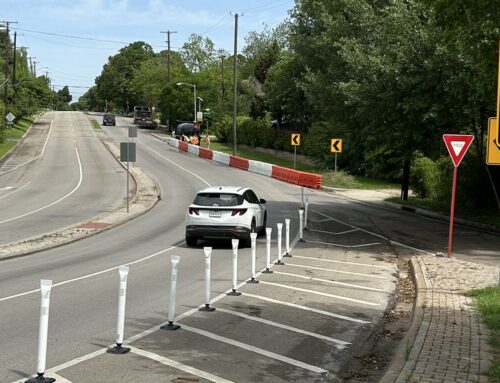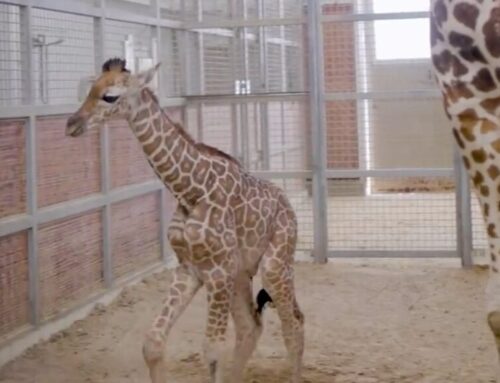
A delivery boy straddles his bike in downtown Dallas in the 1930s. Photo courtesy of the Library of Congress
Bike Friendly Oak Cliff’s Spooky Cross bike race draws some 2,000 bike racers to Oak Cliff every October and is considered one of the best cyclocross races in Texas. While Spooky Cross is the biggest bike race in Oak Cliff, it is not the first. Back in the 1920s and ’30s, many bike races were staged on our side of the river, and Oak Cliff was home to a few of the best amateur racers in the United States at the time.
Dallas bike clubs including Star Cycling Club and the Busy Boys’ Bicycle Club formed sometime before 1920, with messengers and deliverymen at the core of their memberships.
Star Cycling’s president, B.A. Dunn, owned a namesake bike shop at Wood and Browder downtown. In 1922, the club sent two riders, 14-year-old George Howe and 17-year-old J.C. Barnett of Oak Cliff, to the amateur national bike racing championships in Atlantic City, N.J. They both had won state titles in a competition at the old Fair Park velodrome earlier that year. Howe took third place in the juniors category at nationals.
[quote align=”right” color=”#000000″]Americans’ interest in cycling began dying down in the 1920s. But then bicycling made a comeback in the mid-1930s in reaction to the onslaught of automobile culture.[/quote]
On July 4, 1923, the clubs staged races on Eagle Ford Road, which now is Singleton. This was a substitute location for the traditional Fourth of July bike races, which had been held since the late 1890s at Fair Park. But that year, the velodrome was being repurposed for horse racing. Anyway, it is the earliest news report of a bicycle race on our side of the river. There were 10 competition categories for distances of one-quarter mile, one mile and two miles. The overall winner of the day, Leslie James, won a gold watch. The second- and third-place winners, R.J. Reitz and Marshall Young, won a pair of tires and handlebars, respectively.
After the Eagle Ford Road races, the clubs began staging races at Lake Cliff Park.
This was at a time when bicycle racing was not considered to be the stuff of Flanders and the French Alps. It had been a wildly popular sport in America.
In the 1890s, a new bicycle was like an iPhone 6. Everybody wanted one. Baseball already was the national pastime, but consider there was no Super Bowl, no March Madness. Beginning in 1891 and through the 1920s, six-day track bicycle races held in Madison Square Garden were as big as the World Series. They were broadcast nationally by radio, and Dallas newspapers ran photos and results of those races on their pages.
Americans’ interest in cycling began dying down in the 1920s. But then bicycling made a comeback in the mid-1930s in reaction to the onslaught of automobile culture.
In April 1935, a San Francisco-based cycling coach named Ernest Ohrt came to Dallas scouting for the 1936 U.S. Olympic cycling team. He staged a 25-mile race from Lake Cliff Park to the old Arlington Downs horse racing track and back. None of our boys made the team, but after that, cycling clubs began staging occasional road races from Lake Cliff to Fort Worth and back.
In July 1937, a 100-mile race starting at Fair Park drew 75 racers from Texas, Oklahoma and Missouri. The winner was Geoffrey McBride, an Oak Cliff resident and 15-year veteran of the Dallas bike-racing scene. McBride won the race in five hours, five minutes and four seconds.
Later that summer, in August 1937, McBride organized a women’s race as part of the Texas state bicycle racing championships at Kiest Park. Six women including McBride’s wife competed in the one-mile race.
Geoffrey McBride and another racer named Rollin Burns had won the state championship in Waco in 1925. Dallas racers had owned that competition, taking first place in every category. McBride and Burns went on to compete at nationals in St. Louis that year. Burns had taken fifth place at nationals in the five- and 10-mile races the previous year. We could find no record of how the two, who would have been around 18 at the time, fared in the 1925 national amateur bike racing competition.
In the 1940s young bike racers were plucked out of their saddles and into World War II. Rubber was scarce, and industrial efforts focused on the wars overseas. After the war, suburban lifestyle proliferated. Cars, highways and parking lots began to dominate the landscape. Bikes came to be considered children’s toys to be ridden safely on cul-de-sac sidewalks.
Bicycle racing all but vanished from American culture.
When old B.A. Dunn, the bike-shop owner, began holding bike races at the Fair Park speedway in 1954, it was touted as a “revival.” A few races were held that year, but there are few mentions of bike races in Dallas until the sport’s next revival in the 1970s.
Bike racing returned to Oak Cliff with the construction of the mountain bike trail at Oak Cliff Nature Preserve, where several races are staged every year. In the 2000s, Bike Friendly Oak Cliff and fixed-gear riders made bikes cool again in our neighborhood. Now Oak Cliff has two bike shops — Oak Cliff Bicycle Co. and Dallas Bike Works — that sponsor road and mountain-bike racing teams. And although the velodrome is long gone, there are criterium races held at Fair Park every Thursday in the spring and summer.
Now if we can just get another race going at Lake Cliff Park.





